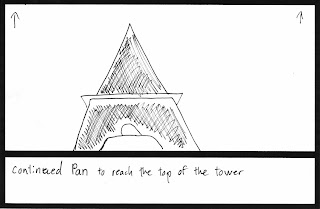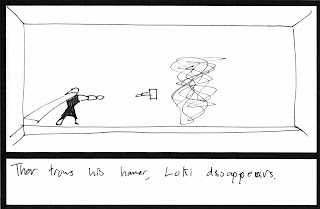Today's lecture focused on Cultural Imperialism and the spread of the Capitalist way of life, and different views on Globalization. Firstly was the definitions of how globalism would benefit communism and capitalism.
Socialist (communism) - The process of transformation of local or regional phenomena into global ones. It can be described as a process by which the people of the world are unified into a single society and function together. This process is a combination of economic, technological, sociocultural and political forces. Globalization of this would benefit as the more people involved in this system would produce an increased number of beneficial and advanced outcomes for the socialist group.
Capitalist - The elimination of state-enforced restrictions on exchange
across political borders and to the increasing integrated and
global system of exchange, commerce, and production that emerges as a
result of such eliminations of state-enforced
restrictions on exchange across political borders. Globalization would benefit this as the wider the spread on capitalism the more money would be made to corporations that can then expand their bushiness even further globally.

Capitalist globalization has happened, and even influenced cultural globalization, for example; 'McDonaldization.' Sociologist George Ritzer coined this term and i defined in his own words "McDonaldization is the wide ranging sociocultural process by which the principles of the fast food restaurant are coming to dominate more and more sectors of American society as well as the rest of the world." This clearly is what happened as a McDonald's can now be found in nearly every major city in the world, emphasizing the capitalist cultural globalization growth.
Marshall McLuhan predicted in 1964 that "Today after more than a century of electric technology, we have extended our central nervous system in a global embrace, abolishing both space and time as far as our planet is concerned." This is true in the sense that we can listen and see events live on the other side of the planet, but his "Global Village Thesis" is more of a idealistic view of the future rather than a realistic one.
The Global Village Thesis is that in the future technology would've got so advanced the world would be more like a village, with easy communications between countries and that this would unite the world and that we would help and benefit each other in centripetal forces (a global united society). This clearly did not happen, as although this could be said for some countries, the effects of technology has also created advanced weapons systems and seems to have influenced Centrifugal forces (that would tear the world apart in tribal wars) where rather than help each other, it seems within human nature to over rule others and take what possessions said country require (such as oil.)
Problems with Globalization
- Sovereignty - Challenges the idea of nation state
- Accountability - Transnational forces and organizations: Who controls the vastly expanding powerful businesses?
- Identity - Who are we? If the whole world were to accept British culture, we would loose our identity as a country, as 'what is means to be British', would simply be 'what human society is'.
Accountability I see as the most dangerous flaw. For example, large corporations and companies may have laws in certain countries, but as they expand into different countries and continents these laws no longer apply and they become hard to control. Essentially 6 companies control the worlds media through possession various other media corporations. All of which are American. If one company controls the vast output of the worlds media, the news we receive is a biased, American, capitalist out-look on the world. This is called Cultural Imperialism.
Another example is Rupert Murdoch. Rupert Murdoch owns:
- The News of the World
- The Sun
- The Sunday Times
- The Times
- NY Post
- BSkyB
- Fox T.V
He then used these media's to influence peoples views on political parties, to then influence who got voted into power. He did this in exchange laws on expanding business to give himself even more power. This kind of power is ever-growing and seemingly limitless, as is Sourcing. Sourcing is the idea that the only news reported is that of news that the companies want reported to benefit themselves and partners, businesses and the highest paying politicians.
Even Films made like Al Gore "An Inconvenient Truth" (2006) Directed by Davis Guggenheim that is in dramatic favor of the increasing global warming and climate change, advising people to release less CO2, plant more vegetation, try to be CO2 neutral, recycle, buy a hybrid vehicle, encourage everyone you know to then watch this film, is although trying to make a difference, still using a capitalist out-look for people to 'Buy more stuff to support expanding businesses to make more money."
Sustainability is the term that means "The development that meets the needs of the present without compromising the needs of the future." While this is a good thought it is business that will always put present 1st and future 2nd.
Many companies also use 'Green washing,' by putting lots of symbols of products packaging, using unbleached paper, and emotional message, earthly tones and certain type faces (usually sans serif) to give the impression that they are a 'green' company aware that consumers are more likely to buy this product, even though it has little to no difference to other products. The only real solution is to tackle the real problem or climate change: globalization of expanding, powerful businesses emitting huge amounts of CO2.
 Editing photographs is not new skill, though with computer programmes such as Photoshop it has become far easier. Photographer Ansel Adams used this technique in throughout his career especially in his 1958 image 'Aspens.' He edited these photos by 'dark room manipulation' where he would alter the light levels and cover certain areas up to create different contrasts in places of his images.
Editing photographs is not new skill, though with computer programmes such as Photoshop it has become far easier. Photographer Ansel Adams used this technique in throughout his career especially in his 1958 image 'Aspens.' He edited these photos by 'dark room manipulation' where he would alter the light levels and cover certain areas up to create different contrasts in places of his images.
 Sometimes too much truth is shown, such as Ken Jarecke's photograph taken in the 'Mile of Death' in the gulf war called "Iraqi soldier" which was banned from the front page in 1992 after too many complaints. This is too much as people reading the paper and eating their breakfast were put off by this image, weather that is right or wrong is questionable. People sat comfortable in their homes looking at the innocent dead killed by friendly fire.
Sometimes too much truth is shown, such as Ken Jarecke's photograph taken in the 'Mile of Death' in the gulf war called "Iraqi soldier" which was banned from the front page in 1992 after too many complaints. This is too much as people reading the paper and eating their breakfast were put off by this image, weather that is right or wrong is questionable. People sat comfortable in their homes looking at the innocent dead killed by friendly fire. This advertisement for Opium perfume was banned in 2000 for its sexual content and henceforth complaints. It was 'the most complained about advertisement in the last 5 years' but rotated 90 degrees so the image was upright, it became perfectly acceptable. It could be argued offense was taken because the woman looks to be in some sort of high state, with the title 'Opium' emphasis this. Or it could be for its sexual content and her nipple showing, but why this is lessened by turning her vertical is beyond me.
This advertisement for Opium perfume was banned in 2000 for its sexual content and henceforth complaints. It was 'the most complained about advertisement in the last 5 years' but rotated 90 degrees so the image was upright, it became perfectly acceptable. It could be argued offense was taken because the woman looks to be in some sort of high state, with the title 'Opium' emphasis this. Or it could be for its sexual content and her nipple showing, but why this is lessened by turning her vertical is beyond me. However, when a photo like this is banned, I find it strange pieces like Agnolo Branzino's 1545 piece Venus, Cupid, Fully of Time (where a mother and son are kissing naked while the son touches the mothers breast) and Balthus's paintings of sexualised young girls (such as 1945 the golden years, and 1938 Therese dreaming) are not. Even things like when in 1981 Andy Earl's Bow wow wow cover (inspired by the 1832 painting Dejeuner sur L'Herbe) can get away with being allowed with a naked 15 year old girl on the front cover, but an advertisement of an girl of age is banned, to me is a sign of a very strange system indeed. But perhaps this is under the obscenity
However, when a photo like this is banned, I find it strange pieces like Agnolo Branzino's 1545 piece Venus, Cupid, Fully of Time (where a mother and son are kissing naked while the son touches the mothers breast) and Balthus's paintings of sexualised young girls (such as 1945 the golden years, and 1938 Therese dreaming) are not. Even things like when in 1981 Andy Earl's Bow wow wow cover (inspired by the 1832 painting Dejeuner sur L'Herbe) can get away with being allowed with a naked 15 year old girl on the front cover, but an advertisement of an girl of age is banned, to me is a sign of a very strange system indeed. But perhaps this is under the obscenity law, which differentiates from protecting art and prohibiting trash, to me, however, I see painted pictures of clothed but sexualised underage girls more offensive than a photograph of a naked woman of age.
law, which differentiates from protecting art and prohibiting trash, to me, however, I see painted pictures of clothed but sexualised underage girls more offensive than a photograph of a naked woman of age.




























































































